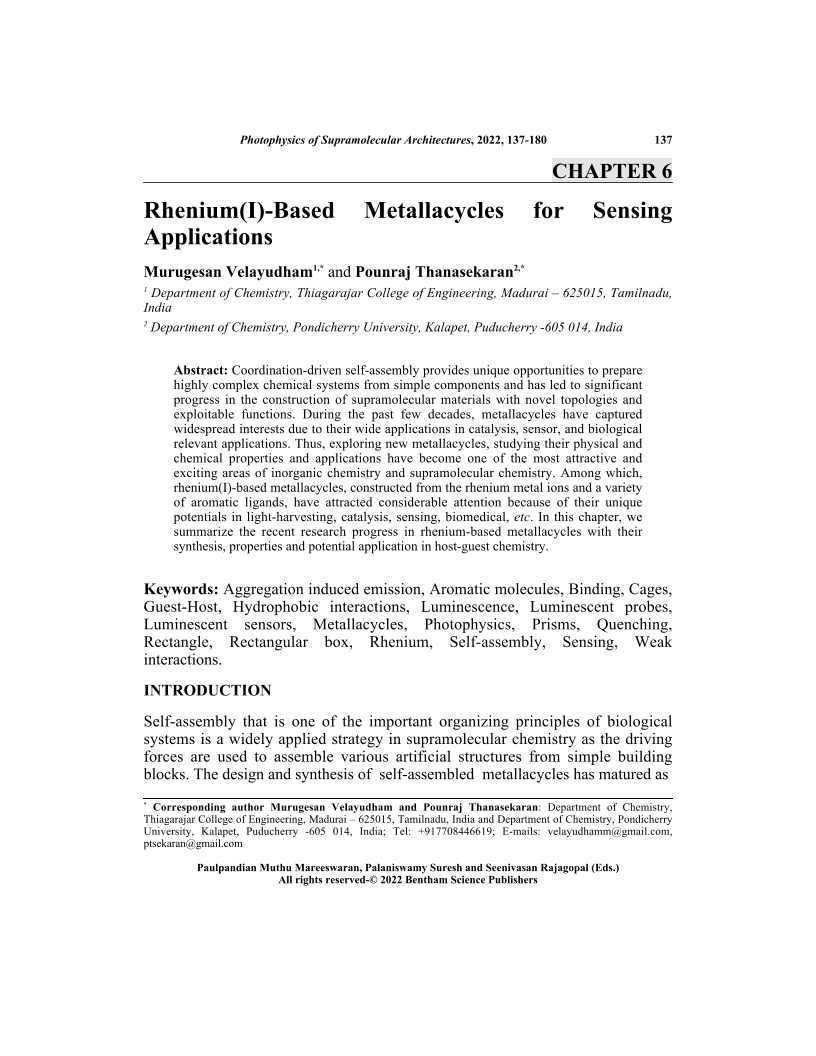Rhenium(I)-Based Metallacycles for Sensing Applications

- Authors: Murugesan Velayudham1, Pounraj Thanasekaran2
-
View Affiliations Hide Affiliations1 Department of Chemistry, Thiagarajar College of Engineering, Madurai 625015, Tamilnadu,India 2 Department of Chemistry, Pondicherry University, Kalapet, Puducherry 605 014, India
- Source: Photophysics of Supramolecular Architectures , pp 137-180
- Publication Date: August 2022
- Language: English
Rhenium(I)-Based Metallacycles for Sensing Applications, Page 1 of 1
< Previous page | Next page > /docserver/preview/fulltext/9789815049190/chap6-1.gif
Coordination-driven self-assembly provides unique opportunities to prepare highly complex chemical systems from simple components and has led to significant progress in the construction of supramolecular materials with novel topologies and exploitable functions. During the past few decades, metallacycles have captured widespread interests due to their wide applications in catalysis, sensor, and biological relevant applications. Thus, exploring new metallacycles, studying their physical and chemical properties and applications have become one of the most attractive and exciting areas of inorganic chemistry and supramolecular chemistry. Among which, rhenium(I)-based metallacycles, constructed from the rhenium metal ions and a variety of aromatic ligands, have attracted considerable attention because of their unique potentials in light-harvesting, catalysis, sensing, biomedical, etc. In this chapter, we summarize the recent research progress in rhenium-based metallacycles with their synthesis, properties and potential application in host-guest chemistry.
-
From This Site
/content/books/9789815049190.chap6dcterms_subject,pub_keyword-contentType:Journal -contentType:Figure -contentType:Table -contentType:SupplementaryData105

